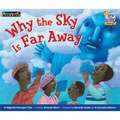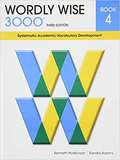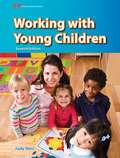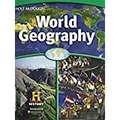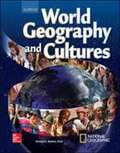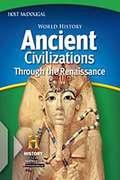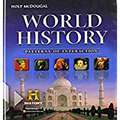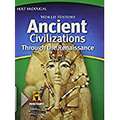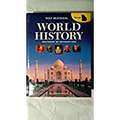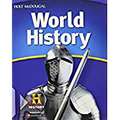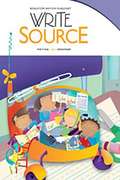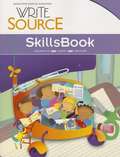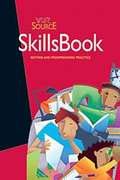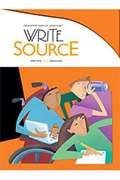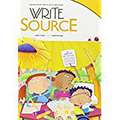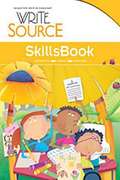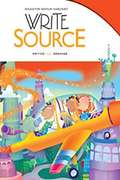- Table View
- List View
More NIMAC books are available at www.nimac.us. If you find your title in the NIMAC and not in Bookshare then please contact us to request it.
Why Living Things Need… Homes (Into Reading Texas, Read Aloud Module 9 #1)
by Daniel NunnNIMAC-sourced textbook
Why Owl Has Big Eyes and Rabbit Hops
by Lori O'Dea Kathleen Kuchera Rebecca GrudzinaRaweno makes animals, but Owl and Rabbit come out wrong, since Owl is too impatient and Rabbit is too scared.
Why the Sea Is Salty
by Lori O'Dea Coco Masuda Rebecca GrudzinaA thief sinks his boat when he overloads it with riches made by a magic mill.
Why the Sky Is Far Away: A Nigerian Pourquoi Tale
by Antonio Blane Gerardo Suzán A Corazón Abierto Laura StromIn the African pourquoi tale, long ago people could take bites of the delicious Sky whenever they wanted to. People gobbled and gobbled and gobbled the Sky. Soon the Sky had to make some changes.
The Wind and the Sun
by Rebecca Grudzina Gerardo Suzán Lori O'DeaDuring a contest to remove a man's coat, the wind learns that sometimes gentleness is strength.
Working with Young Children
by Judy HerrWorking with Young Children introduces students to the fast-growing field of early childhood education. Students will develop skills for guiding children effectively while keeping them healthy and safe. Working with Young Children applies child development principles to child care settings. On-site photos enhance the inviting, colorful format. This text provides current health, safety, and nutrition information plus additional coverage of technology, cultural diversity, family stressors, and child care careers. · New sections address licensing rules and regulations in addition to historical influences on early child care and education. · New chapter-opening activities include Key Concepts, Graphic Organizers, and Reading Advantage pre-reading activities. · New features appearing throughout the chapters include Safety First, Focus on Health, Learn More About..., and Workplace Connections. · Expanded chapter reviews provide more Cross-Curricular Links and new Thinking Critically, Using Technology, and Portfolio Project activities. · Appendix now includes NAEYC's Core Values.
World Geography
by Christopher L. SalterIn ESSENTIALS OF WORLD REGIONAL GEOGRAPHY, 4th Edition, Kit Salter and Joe Hobbs build the story of each region using contemporary concerns, global issues, and historical themes to create a complete picture of our ever-changing planet and its people. The authors help students understand what aspects of a place give it identity and personality by detailing what features make it newsworthy now and what features might make it critical in the 21st century. ESSENTIALS OF WORLD REGIONAL GEOGRAPHY, 4th Edition, is a market leading text with a unique chapter layout that allows for flexibility of topic coverage. "Profile Chapters" introduce a region in global terms by discussing the overall physiographic, economic, historical, economic, and cultural attributes that characterize a large world region (such as Europe or Monsoon Asia). Subsequent chapters then elaborate at a more local level (i. e. , subregions and countries) about the finer-scale details, e. g. what geographical factors have made Germany a very different place from France. The advantages of this approach are that the profile chapters allow an instructor a great amount of latitude in how to cover a region. In a one-semester course, for example, many professors might choose to focus on covering only the profile chapters for many of the regions. In that way, the book lends itself very well to semester- or even quarter-length courses. Coverage of global themes is given strong focus and is integrated within a traditional regional organization. Another key strength of the book is its pedagogical structure, accented by a number of boxed elements: "Definitions and Insights", "Regional Perspectives", "Problem Landscapes", "Landscape in Literature", and "Perspectives from the Field" (see description below). These boxed elements combine to identify common themes across regional boundaries, as well as to clarify terms of common usage that may nevertheless be less than familiar to today' s students.
World Geography and Cultures
by Richard G. BoehmA world view from renowned authors World Geography and Culturesoffers a fascinating view of the world enlivened by a meticulous presentation that focuses on the development of geographic literacy. Every region is studied in three parts: physical geography, cultural geography, and current events.
World History: Guided Reading Workbook Grades 6-8 Ancient Civilizations Through The Renaissance (World History Ser.)
by Holt McdougalNIMAC-sourced textbook
World History: Patterns of Interaction
by Roger B. Beck Linda Black Larry S. KriegerWorld history textbook
World History: Ancient Civilizations Through the Renaissance
by Stanley M. Burstein Richard ShekNIMAC-sourced textbook
World History
by Stanley M. Burstein Richard ShekIdeally suited as either a companion volume to The Ancient World: A Social and Cultural History, Sixth Edition, or as a stand-alone volume, The Ancient World: Readings in Social and Cultural History, Third Edition provides students of ancient history with a wide selection of texts illustrating the social and cultural life of the peoples of West Asia, the Mediterranean, and Europe, from the earliest recorded time to the 7th century A. D. In recognition of the increased scholarly understanding of Late Antiquity, the Third Edition includes selections that address key aspects of Byzantium, northern Europe, and Islam. Book jacket.
Write Source [Grade 1]
by Dave Kemper Patricia Reigel Patrick Sebranek Chris KrenzkeNIMAC-sourced textbook
Write Source [Grade 11]
by Dave Kemper Patrick Sebranek Verne Meyer Chris Krenzke- Step-by-step teacher notes correlated to national standards- Differentiated and cross-curricular instruction to meet all needs- Meaningful test prep with pretests, posttests, writing prompts, and more- Minilessons to introduce and reinforce key concepts- Additional information on the writing process and six traits
Write Source [Grade 2]
by Dave Kemper Patrick Sebranek Verne Meyer Chris KrenzkeNIMAC-sourced textbook
Write Source [Grade 3]
by Dave Kemper Patrick Sebranek Verne Meyer Chris KrenzkeNIMAC-sourced textbook

